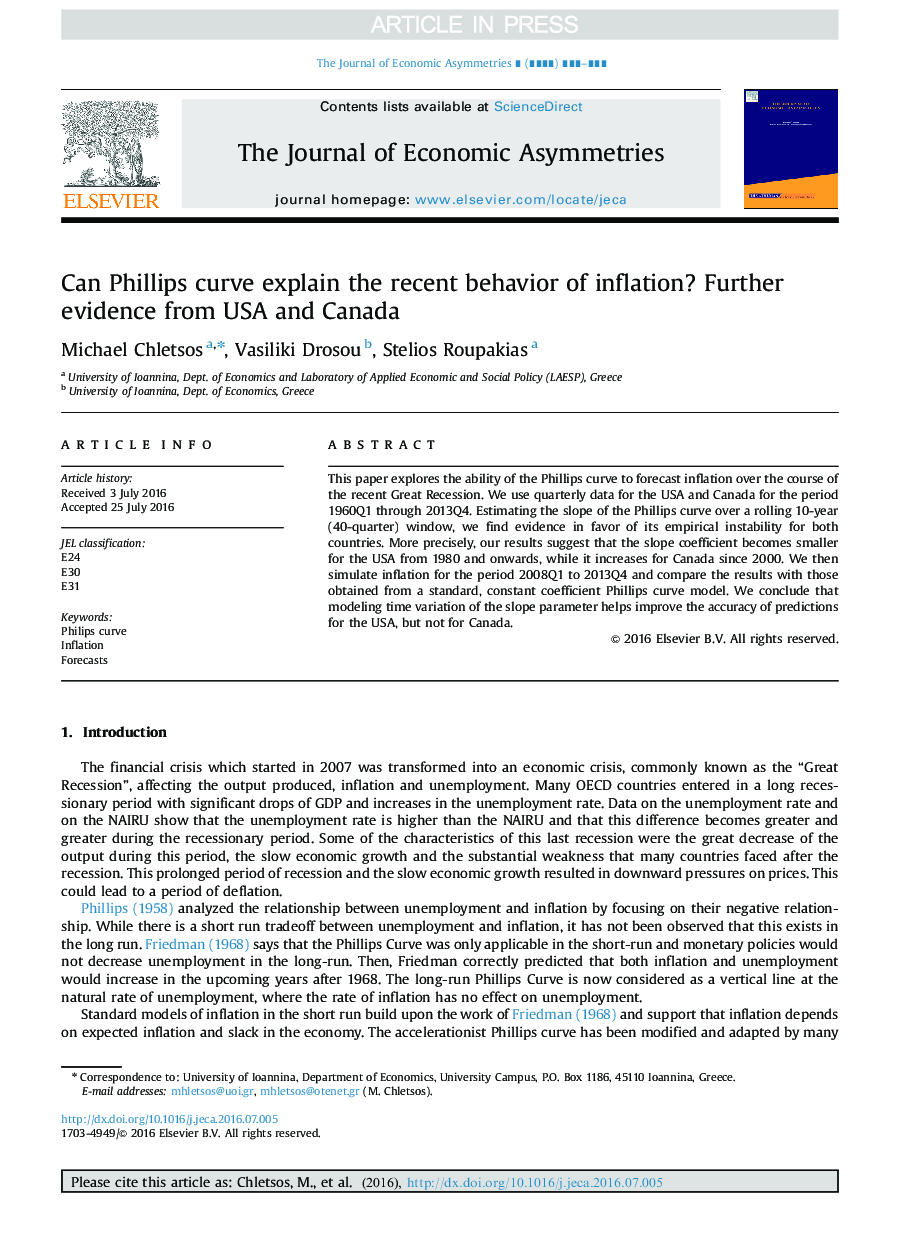| Article ID | Journal | Published Year | Pages | File Type |
|---|---|---|---|---|
| 5097677 | The Journal of Economic Asymmetries | 2016 | 9 Pages |
Abstract
This paper explores the ability of the Phillips curve to forecast inflation over the course of the recent Great Recession. We use quarterly data for the USA and Canada for the period 1960Q1 through 2013Q4. Estimating the slope of the Phillips curve over a rolling 10-year (40-quarter) window, we find evidence in favor of its empirical instability for both countries. More precisely, our results suggest that the slope coefficient becomes smaller for the USA from 1980 and onwards, while it increases for Canada since 2000. We then simulate inflation for the period 2008Q1 to 2013Q4 and compare the results with those obtained from a standard, constant coefficient Phillips curve model. We conclude that modeling time variation of the slope parameter helps improve the accuracy of predictions for the USA, but not for Canada.
Related Topics
Social Sciences and Humanities
Economics, Econometrics and Finance
Economics and Econometrics
Authors
Michael Chletsos, Vasiliki Drosou, Stelios Roupakias,
